Best Paper For Tri Fold Brochure
With the rise of web-based marketing, the golden age of the folded brochure may be over. As a result, many up-and-coming designers today aren't learning the basic terms, protocols and skills for that type of design.
That's a problem, because while folded brochures may be less prevalent than they once were, they are not going away entirely. As long as there are trade shows and people have mailboxes, the brochure will have a ready audience. And if you can't respond to a client's requests in this department, then you are going to come off as an amateur.
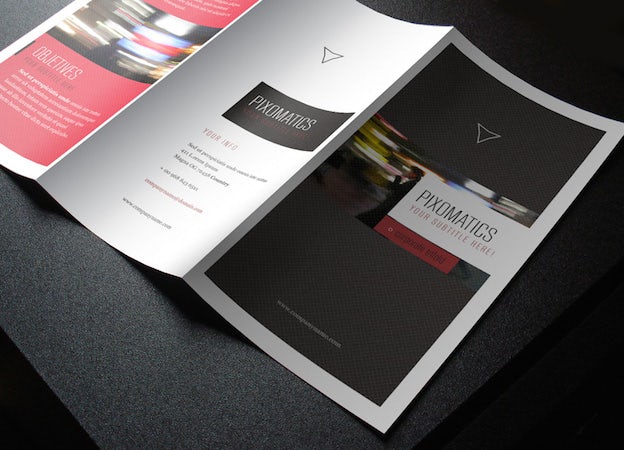
Here's a quiz to see how solid your folded brochure knowledge is. If a client instructed you to create a brochure that is "Tri-fold (6 sides) A4 (Folds to A5)," would you know what that means?
This exact question came up in our community forum not long ago, and before one of our seasoned experts arrived to supply an answer (which we will go over below), it seemed to have a lot of people stumped.
If you're one of those people, never fear! In this post we'll run through the basic terms and protocols you need to know to excel in folded brochure design.
Paper sizes
We've just sent you your free brochure ebook.
Quick, what's the relationship between A3, C5 and tabloid paper sizes? You would be forgiven for not knowing the answer off the top of your head, and you can feel free to blame North America, which has maintained its own system even as most of the world has switched to an ISO (International Organization for Standardization) standard.
But if these terms are completely unfamiliar to you, then that is something to remedy. We'll start with the North American system, which is just a matter of straightforward memorization:
Letter: 8.5 inches by 11 inches. Commonly used for tri-fold design.
Legal: 8.5 inches by 14 inches. Used for tri-fold designs that want a little more room.
Tabloid: 11 inches by 17 inches. Most often used as a half fold with two large sheets, like a menu.
11 x 25.5: We're not sure if this one has a proper name, but as a tri-fold it results in three letter sized pages.
The ISO system is rooted in simple mathematical proportions. It starts with A0 (the largest) and generally proceeds to A7 (the smallest, though in theory the progression could continue ad infinitum). Each is defined by the aspect ratio of 1:1.4142 (the square root of two), and the increments proceed by bisection: halving the length of the former to obtain the width of the latter, with the width of the former then becoming the latter's length. It makes more sense when you look at it graphically:

Thus, as long as you know the conventionally defined dimensions of A0 (841mm x 1189mm), you should be able to figure out the dimensions of A1: 594 (1/2 of 1189) x 841. And so on. For easy reference here they all are:
A0: 841mm x 1189mm
A1: 594mm x 841mm
A2: 420mm x 594mm
A3: 297mm x 420mm
A4: 210mm x 297mm (roughly equivalent to North American letter)
A5: 148mm x 210mm
A6: 105mm x 148mm
A7: 74mm x 105mm
Note: There is also a B series and a C series, but they'll come up less often. A B series sheet is the geometric mean of the corresponding and preceding A series sheets—i.e., B1 is the mean of A0 and A1, thus falling in between those in size.
Since they are somewhat bigger, they are often applicable for things like posters and large books. Similarly, the C series is the geometric mean of corresponding A and B series sheets, so only slightly bigger than the A series. It is often used for envelopes, which must be just slightly larger than their contents. For reference see Wikipedia, which has a table with all sizes.
So how about our original conundrum, a brochure that is "tri-fold, A4 (Folds to A5)." The answer: what the client actually had in mind was a "gate" fold brochure, the total size of which is A4.
A gate fold is divided into three sections: a center section which has one half of the total length as its width, flanked by two others which are half as wide as that (see below). In other words, if the total size of the page is A4, then the size of the center section will be A5. Thus, "A4 (Folds to A5)."

Types of folds
In theory, there are as many folded brochure possibilities as there are origami creatures. In practice, you're most likely to encounter the following eight, or variations thereof (note, the nomenclature varies so make sure you and your client are on the same page):
Single fold: A sheet folded in half to produce two panels (per side). Doesn't get any simpler.
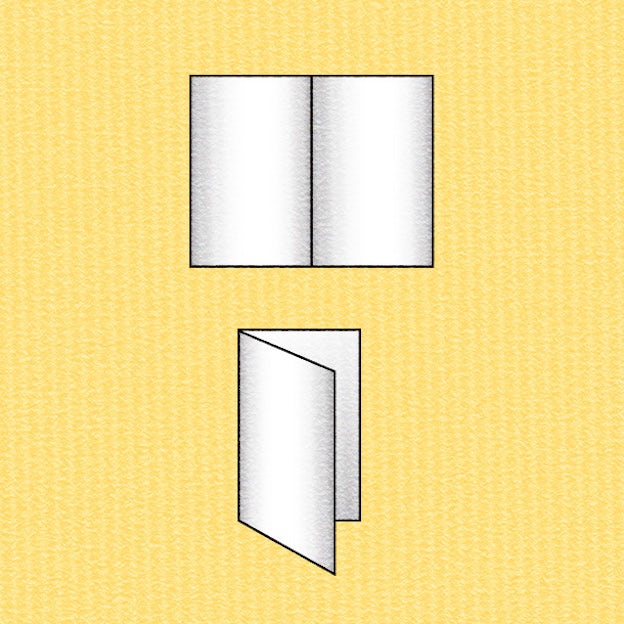
Tri-fold: A sheet folded twice to produce three equally sized panels, with both side leaves folded over the center one.
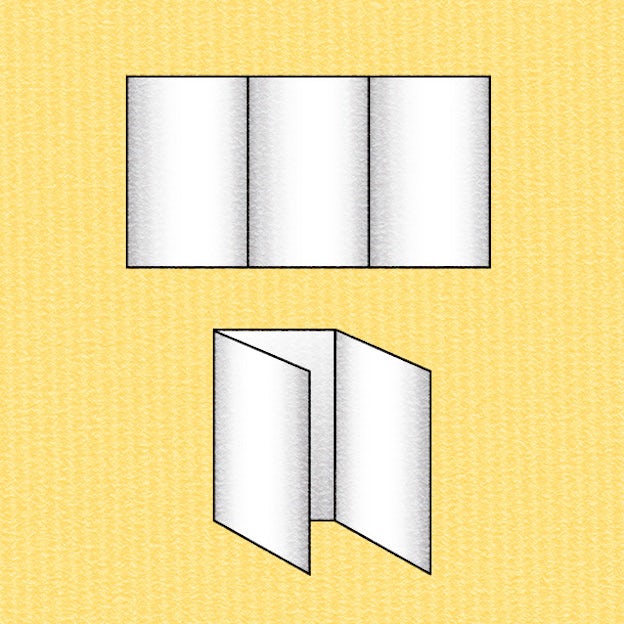
Right angle fold: A sheet folded once lengthwise and once crosswise to produce a total of eight sections (four per side).
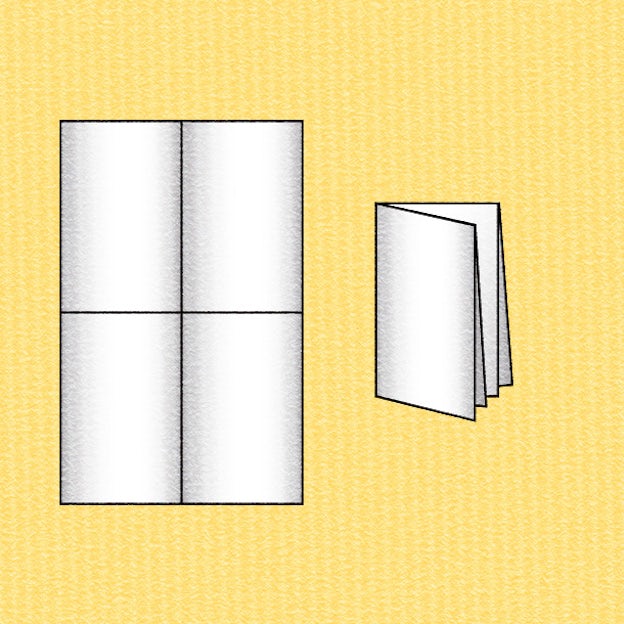
Gate fold: A sheet folded twice to produce three panels, with the center panel twice as wide as the flanking ones, which fold over it.

Double gate fold: A sheet folded three times to produce four (roughly) equally sized panels, that opens out from the center.
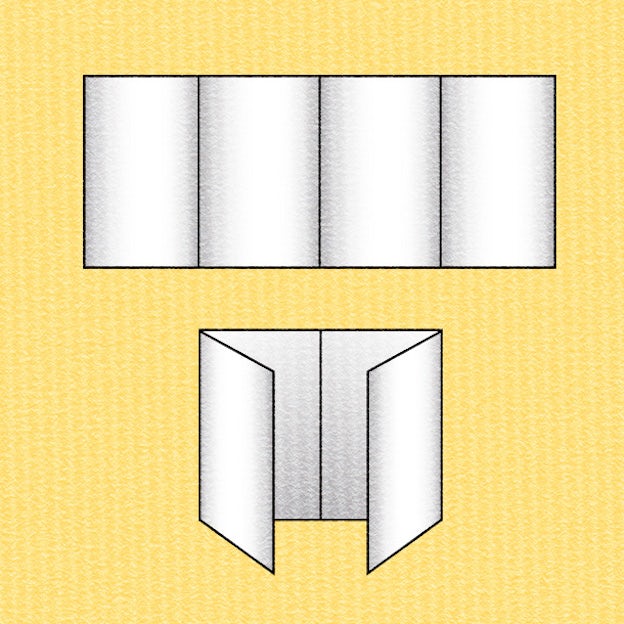
Double parallel: A sheet folded three times to produce four (roughly) equally sized panels, with the rightmost panels folding into the nook of the leftmost panels.

Roll fold: A sheet folded three times to produce four (roughly) equally sized panels, folded so each leaf is rolled over onto the next.

Accordion fold: A sheet folded twice or more to produce any number of equally sized panels, folded like an accordion.

Sometimes your client will request a specific fold; other times you will be expected to come up with one yourself as part of your design solution (every fold type has its own set of possibilities and constraints, including the size of the panels it produces and how it places information in a hierarchy). Either way, you will have to keep in mind the technical requirements of each. Read on for information on that.
Measurements, margins and bleeds
If you know your client's printer, it's always a good idea to ask them for a template rather than producing your own. The reason is that, when folding brochures, it is common to make small adjustments so they fold flatly and evenly, and these adjustments are not standardized.
For example, even when making a simple tri-fold brochure, the best practice is not to place the folds exactly on the 1/3 and 2/3 marks. Instead, it is common to make the inside panel—whether that is the left or the right—ever so slightly narrower than the others, to ensure that it fits without bending. StockLayouts, for example, suggests a width of 3.625 inches for the inner panel but a width of 3.688 for the outer panels. That ratio is a good rule of thumb, but it is likely to vary slightly from printer to printer.

On a similar note, mind your margins. In a tri-fold brochure, don't forget to make your margins twice as wide where there is a fold. It might look funny on your flat mockup, but this way there will be an equal amount of margin space on either side of the crease. In general, it is a good idea to actually print out and fold your design yourself to make sure you calibrated your measurements appropriately.
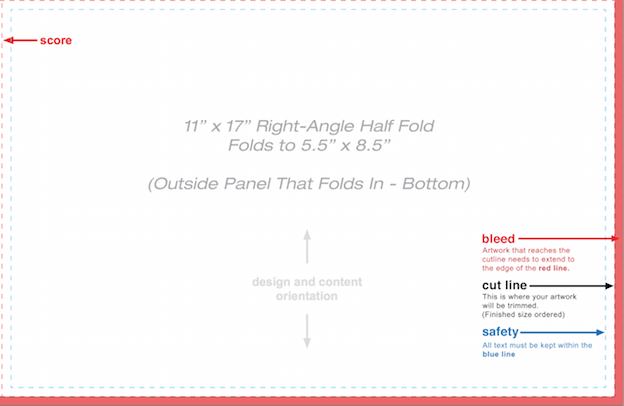
via PsPrint
Lastly, like all printed material, brochures need a certain amount of bleed—a small extension of your design beyond the planned dimensions of the document, to make sure that colors and images go all the way to the edge of the paper when trimmed.
We've just sent you your free brochure ebook.
Best Paper For Tri Fold Brochure
Source: https://99designs.com/blog/tips/folded-brochure-guide/
Posted by: jamescithys.blogspot.com

0 Response to "Best Paper For Tri Fold Brochure"
Post a Comment